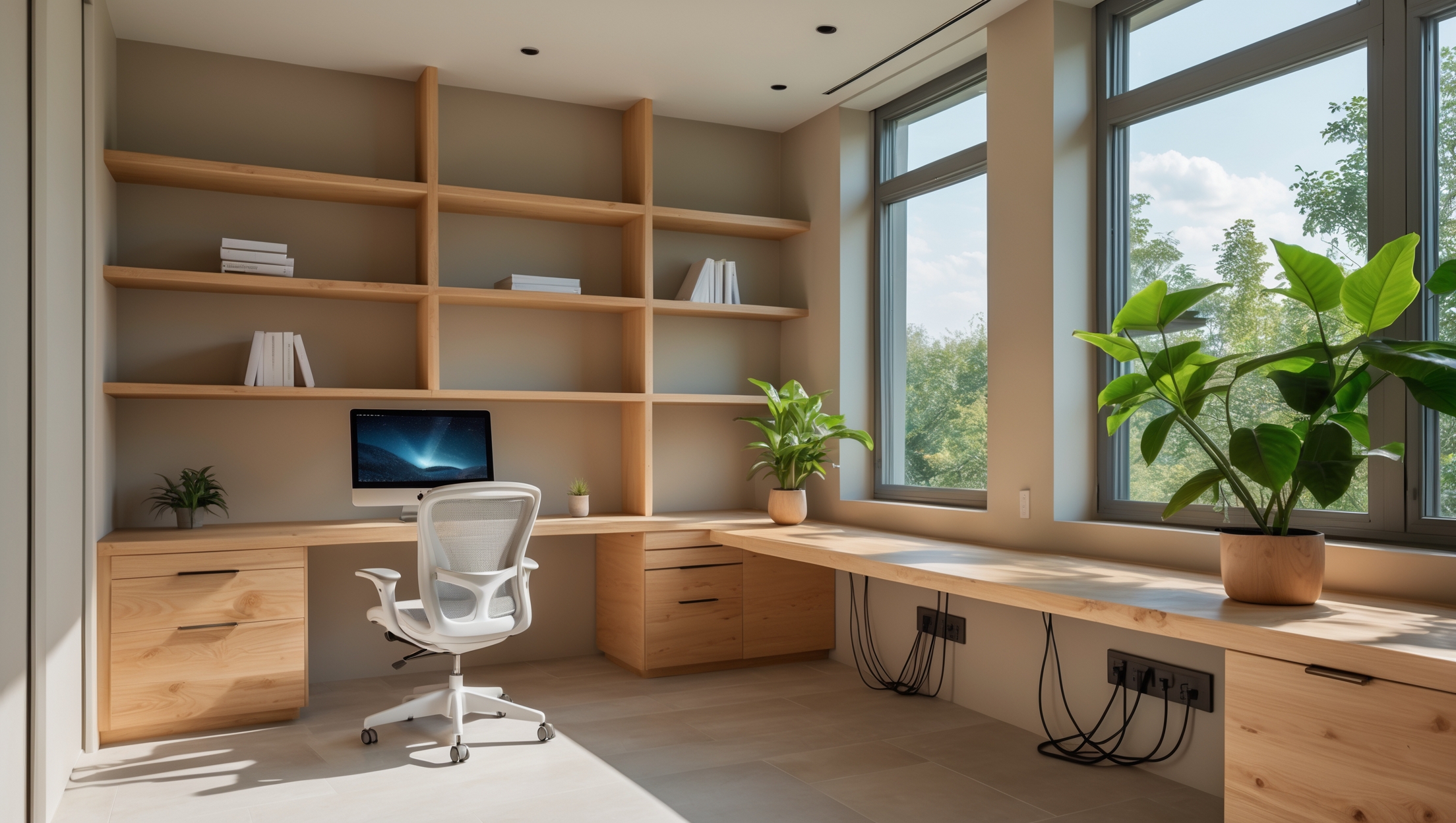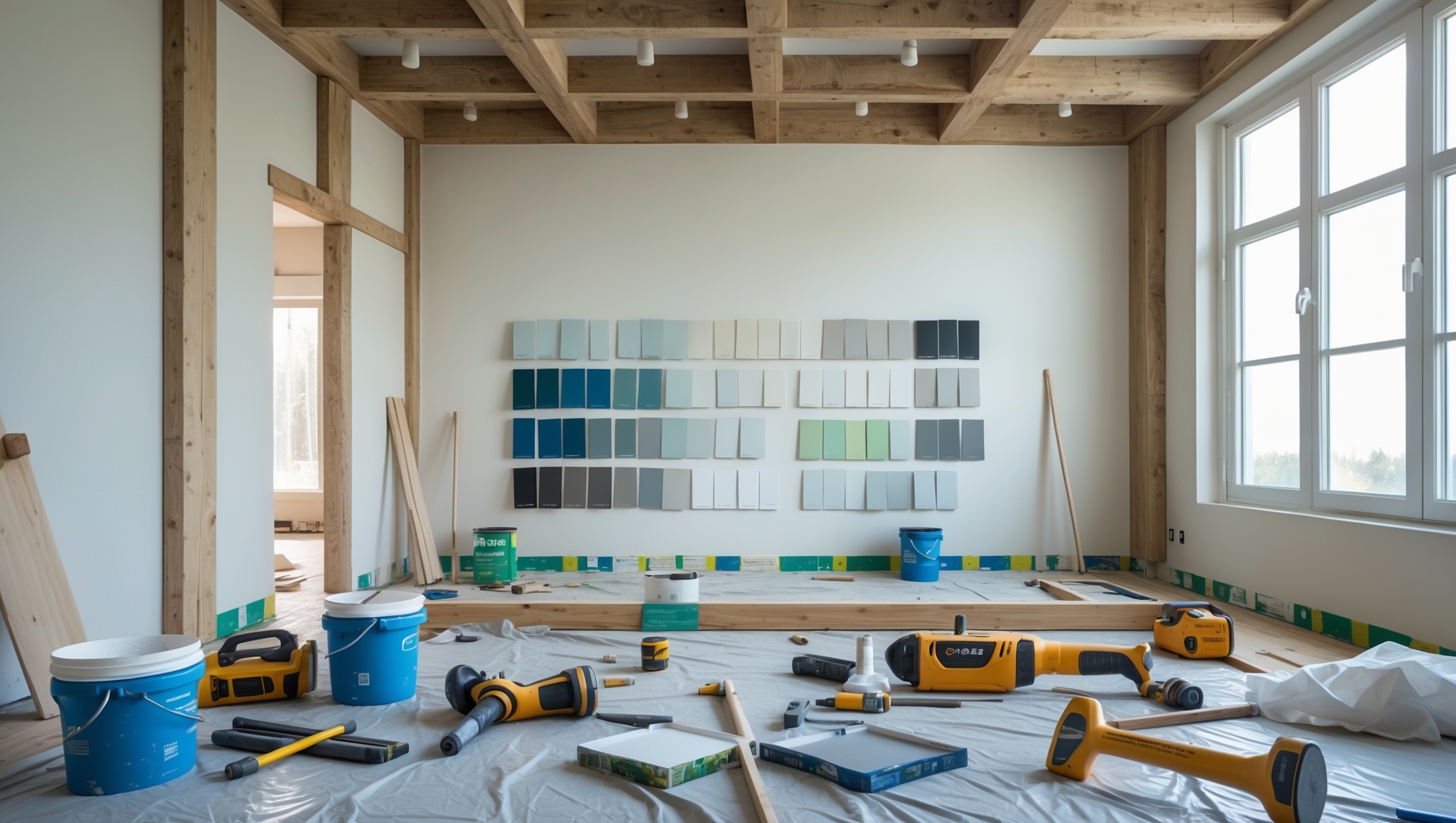Introduction: Why Home Office Renovation Matters More Than Ever
In the modern age of remote work, a well-designed home office isn’t just a luxury—it’s essential for productivity, comfort, and even your career progression. Many homeowners underestimate the impact of a thoughtfully renovated workspace, often settling for a spare room or kitchen table. However, the right home office can boost focus, reduce stress, and support healthier work habits. Whether you’re planning a full-scale renovation or simply upgrading your setup, understanding the costs, permit requirements, and productivity strategies is crucial for a successful project. This comprehensive guide delves into every aspect of home office renovation, from budgeting and compliance to design choices that truly enhance your daily workflow. Whether you’re a freelancer, remote employee, or business owner, these expert insights will help you create a workspace that meets your needs today—and adapts seamlessly for the future.
Budget Planning: Breaking Down the Real Costs
Assessing Your Needs and Setting Priorities
The first step in any successful renovation is a realistic assessment of how you’ll use the space. Will you need soundproofing for calls, built-in storage, or advanced tech integration? List your must-haves and nice-to-haves, then align them with your available budget. Remember that cutting corners on essentials—like ergonomic furniture or proper lighting—can cost more in the long run through discomfort or reduced productivity.
Typical Cost Breakdown
- Design and Planning: $300–$1,500 (DIY vs. professional designer)
- Permits and Inspections: $100–$900 (varies by locality and scope)
- Construction and Carpentry: $1,000–$6,000 (walls, built-ins, soundproofing)
- Electrical and Data Wiring: $500–$2,000 (outlets, lighting, ethernet, smart controls)
- HVAC and Ventilation: $300–$2,500 (if adding or updating climate control)
- Flooring: $800–$3,000 (hardwood, carpet, laminate, or cork for comfort)
- Paint and Finishes: $200–$1,200 (walls, trim, ceiling)
- Furniture and Ergonomics: $600–$4,500 (desk, chair, storage, accessories)
- Tech and Accessories: $300–$2,000 (monitors, webcams, speakers, cable management)
Most homeowners spend between $5,000 and $15,000 for a full home office renovation, but you can scale up or down depending on your goals. Always include a 10–15% contingency for unexpected expenses—especially if you’re opening up walls or updating wiring.
Cost-Saving Strategies
- Reuse or repurpose existing furniture where possible.
- Consider modular or flat-pack options for storage and work surfaces.
- Tackle painting and minor cosmetic upgrades as DIY projects.
- Bundle electrical work to minimize labor costs—do all wiring at once.
- Shop local for gently used office furniture; many businesses sell high-quality pieces at a discount.
Permits and Compliance: What You Need to Know
When Are Permits Required?
Permitting requirements for home office renovations vary by municipality and scope of work. Generally, permits are required if you:
- Add or remove walls
- Change the use of a room (e.g., converting a garage or attic)
- Install new electrical circuits or major data wiring
- Update HVAC or plumbing
Skipping permits can lead to fines, insurance issues, and problems when selling your home. Always verify local zoning laws and building codes before you start.
Common Permit Types
- Building Permit: For structural changes or room conversions.
- Electrical Permit: For installing outlets, lighting, or running new circuits/data lines.
- HVAC Permit: If adding new vents, heating, or air conditioning.
- Home Occupation Permit: Required in some areas for running a business from home, especially if you’ll have clients or deliveries.
How to Navigate the Permit Process
- Contact your city or county building department early to discuss your renovation plans.
- Submit detailed drawings or plans for approval.
- Schedule required inspections as work progresses.
- Keep copies of all permits and inspection reports for your records.
If you’re hiring contractors, confirm in writing who is responsible for securing permits. Never assume your builder or electrician has filed the necessary paperwork.
Designing for Productivity: Evidence-Based Upgrades
Lighting: The Unsung Productivity Hero
Natural light is linked to improved focus and well-being. Position your desk near a window if possible, but avoid direct glare on screens. Supplement with layered lighting:
- Overhead lighting: Dimmable LEDs or flush-mount fixtures for general illumination.
- Task lighting: Adjustable desk lamps with color temperature control (3000–5000K range for alertness).
- Accent lighting: Wall sconces or under-shelf LEDs for ambience and eye comfort.
Invest in high CRI (Color Rendering Index) bulbs for accurate color and reduced eye strain.
Ergonomics: Invest Where It Counts
Poor posture can lead to fatigue, discomfort, and even long-term injury. Essentials for an ergonomic office include:
- Adjustable chair: Lumbar support, adjustable seat height, and armrests.
- Desk at correct height: Elbows at 90 degrees when typing.
- Monitor at eye level: Top of the screen at or slightly below eye height.
- Anti-fatigue mat: For standing desks or hard flooring.
Consider sit-stand desks for movement flexibility. Use keyboard trays and monitor arms to fine-tune your setup.
Acoustics and Soundproofing
Distractions from household noise can sap productivity. Key upgrades include:
- Solid core doors and weatherstripping to block sound leaks.
- Adding wall insulation or acoustic panels if budget allows.
- Carpet, area rugs, and fabric window treatments to absorb sound.
- White noise machines or sound masking for persistent issues.
Smart Storage Solutions
- Built-in shelving or modular wall units to declutter the workspace.
- Filing cabinets or rolling carts for paperwork and supplies.
- Cable management systems to keep cords out of sight.
- Multi-functional furniture, like benches with hidden storage.
Keep frequently used items within arm’s reach and archive rarely used materials out of sight to maintain a tidy, distraction-free environment.
Technology and Connectivity: Creating a Future-Proof Office
Wired vs. Wireless Networking
Reliable internet is non-negotiable for modern work. While Wi-Fi is convenient, consider running ethernet cables for:
- Consistent video conferencing
- Large file uploads/downloads
- Smart home device integration
If wiring isn’t feasible, invest in a high-quality mesh Wi-Fi system.
Power and Charging Infrastructure
- Install outlets with integrated USB ports for charging devices.
- Add surge-protected power strips and cable trays under the desk.
- Consider dedicated circuits for computer equipment to prevent overloads.
Climate Control and Air Quality
- Window treatments to control glare and heat gain.
- Portable air purifiers or upgraded HVAC filters for better indoor air quality.
- Ceiling fans or portable heaters for year-round comfort.
Comfortable temperature and clean air are often overlooked, but they pay dividends in sustained productivity and well-being.
Step-by-Step Setup: Renovating Your Home Office
1. Planning and Design
- Measure your space and create a scaled floor plan.
- Decide on the placement of desk, shelves, and seating.
- Select color schemes that promote calm and focus (soft blues, greens, or neutrals).
- List all equipment and storage needs.
2. Permits and Pre-Construction
- Submit plans and apply for necessary permits.
- Remove old furniture and prep the room—patch holes, clean surfaces.
- Mark wall locations for outlets, data ports, and built-ins.
3. Structural and Electrical Work
- Frame new walls or built-ins as needed.
- Run electrical/data wiring and install outlets per your plan.
- Arrange inspections if required.
4. Finishes and Furnishing
- Paint walls and ceilings using low-VOC paints for healthier air.
- Install flooring and baseboards.
- Mount shelves, storage units, and lighting.
- Assemble and arrange furniture.
5. Tech Integration and Setup
- Set up monitors, computers, printers, and peripheral devices.
- Organize cables and install surge protection.
- Test all networking and smart controls.
6. Final Touches
- Add plants, artwork, and personal touches for inspiration.
- Stock supplies and organize paperwork.
- Review safety and ergonomics before starting work.
Maintenance Best Practices: Keeping Your Office Functional
Regular Cleaning and Upkeep
- Dust electronics and surfaces weekly to prevent build-up.
- Vacuum floors and clean air filters monthly.
- Wipe down high-touch areas with disinfectant.
Tech and Furniture Maintenance
- Check for software updates and back up files regularly.
- Tighten screws and bolts on desks and chairs quarterly.
- Replace worn chair casters or desk mats as needed.
Periodic Ergonomic Checkups
- Reassess chair and desk height every few months.
- Monitor for signs of discomfort—adjust as your work habits evolve.
- Swap out lighting or reposition monitors to reduce eye strain.
Safety Checklist: Protecting Your Investment and Well-being
- Test smoke and carbon monoxide detectors in your office area.
- Ensure all power strips and extension cords are rated for office use.
- Keep walkways clear of cables and trip hazards.
- Install surge protection on all sensitive electronics.
- Secure heavy shelves and furniture to wall studs to prevent tipping.
- Have a fire extinguisher nearby and know how to use it.
Conclusion: Investing in Your Productivity and Peace of Mind
Renovating your home office is more than just a cosmetic upgrade—it’s an investment in your productivity, health, and overall quality of life. By carefully planning your budget, securing necessary permits, and focusing on evidence-based design choices, you can create a workspace that supports your best work every day. Remember that the most effective home offices blend comfort, technology, and personal style, all while meeting safety and compliance standards. Regular maintenance and periodic upgrades will ensure your space continues to serve you as your needs evolve. Whether you’re launching a new business, climbing the corporate ladder, or simply striving for a better work-life balance, a thoughtfully renovated home office can be a game-changer. Start with a clear vision, follow best practices, and don’t be afraid to seek professional guidance for complex projects. Your future self—and your productivity—will thank you for the investment.




